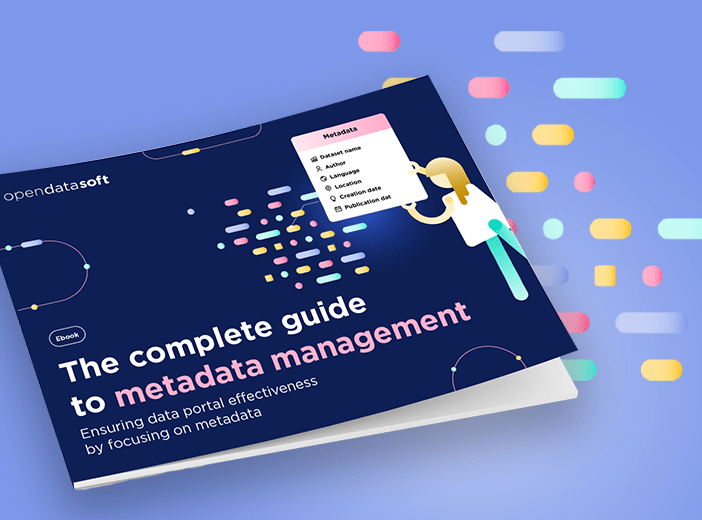Glossary
Metadata
Metadata is data that gives a description of other data. This provides context to make it more easily understandable and usable.
All types of organization generate and use data. But given the variety of sources and different systems that create them, different datasets can be difficult to understand and use. They can be hard to compare with confidence, describe information in different ways or with different units of measurement, and it can be unclear where data has come from, when it was last updated and who the data owner is. Metadata helps give context and allow reliable comparisons and usage of shared data.
What is metadata?
Metadata is data that gives a description of other data. This provides context to make it more easily understandable and usable. Most of the time, it answers the questions: who, what, where, how, and why?
It makes it easier to find, reuse and cross-reference available information. For organizations, this is a real time saver and efficiency in the data management process.
Metadata as we know it appeared with the development of the internet. But even before this the idea of metadata already existed, particularly in archives and libraries. Indeed, to search for documents, archivists and librarians had access to a file containing information about each document: the title, the location, the year of publication, etc.
Today, it is based on the same principles, except that it evolves in a computerized system. The meta titles and meta descriptions of website articles are a perfect example. They allow search engines to understand the purpose of content, allowing it to be found more easily by searchers.
What is its role?
There are different types of metadata, each with a distinct role. These include:
- Descriptive metadata: this describes a piece of data by adding certain details. For example, the creator of the data, the title of the data, the creation date, etc.
- Structural metadata: this allows for easy retrieval of data, since it specifies how it is classified in the information system. For example, the format or medium of the data.
- Administrative metadata: this allows people to find all the history of the data. For example, the name of the author, the creation date and the various modifications made over time.
- Legal metadata: to reinforce data protection, it indicates the applicable legal regime and the required retention period.
All of this metadata can be combined to describe the information within the organization. In all cases, the idea is to enable stakeholders to better manage the data at their disposal. In doing so, it contributes to good data governance.
Why use metadata?
Organizations that want to leverage their data must have a metadata strategy in place. There are several reasons for this:
- Data quality: it helps ensure that data is processed and of high quality. It is a necessary criterion for an open data project.
- Saving time and increasing efficiency: teams no longer need to spend hours searching for information. This also allows the company to reduce costs.
- Collaboration between teams: thanks to the presence of a data catalog, everyone uses the same vocabulary. This facilitates understanding and collaboration between teams.
- Data archiving: thanks to metadata, databases are interoperable and it is possible to keep an up-to-date history of information.
- Decision making: because data is better organized, it is easier to perform cross-analysis and make decisions based on reliable facts.
How can organizations optimize the use of metadata?
It is essential to implement good metadata management as part of data governance programs. Here are some tips:
- Establish a classification scheme: this involves defining upstream the methods for classifying the available information.
- Create a common vocabulary: to facilitate its understanding by employees (whether they are technical or not), it is necessary to define a unique vocabulary that is accessible to all.
- Use standards: there are several standardized models for formulating it, such as the ISO standard or the Dublin Core Metadata Initiative (DCIM). For example, the ISO 8601 standard provides universal date formats.
- Communicate: To optimize the use of digital resources, it is essential to communicate to all collaborators the functioning and formulation of metadata.
Through the Opendatasoft platform, organizations can easily manage, apply and share metadata, ensuring datasets can be quickly and seamlessly discovered, accessed and shared.
Learn more

Blog
Data, metadata, data assets, data products: understanding the differences between these key concepts
In an increasingly data-driven world, understanding the differences between data, metadata, data assets, and data products is essential to maximizing their potential. This is because these interrelated yet distinct concepts each play a key role in driving digital transformation by facilitating data sharing and consumption at scale.

Blog
2025 data leader trends and the importance of self-service data – insights from Gartner
Growing data volumes, increasing complexity and pressure on budgets - just some of the trends that CDOs need to understand and act on. Based on Gartner research, we analyze CDO challenges and trends and explain how they can deliver greater business value from their initiatives.

